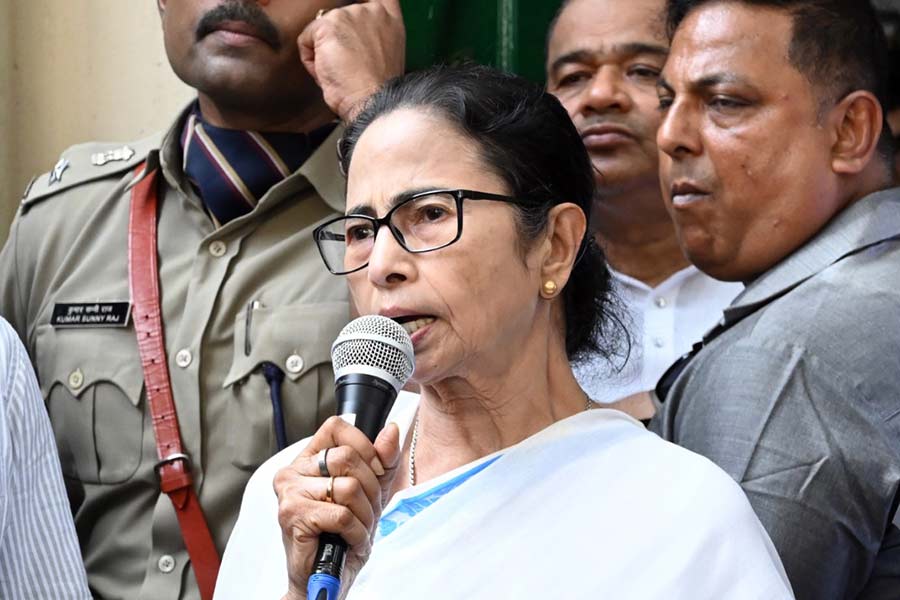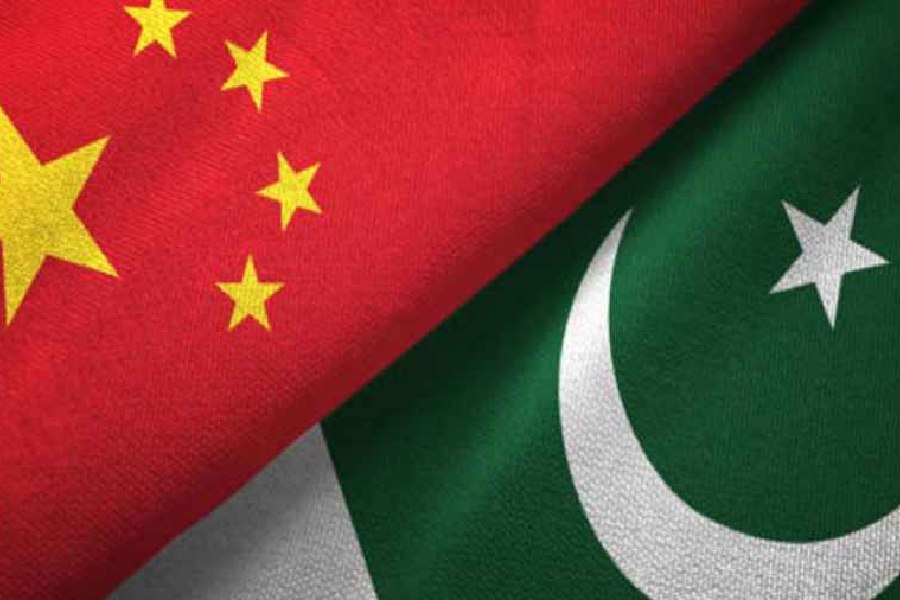 |
| Supporters of Brahmeshwar Singh ‘Mukhiya’ take out a protest march in Jehanabad on Sunday. Picture by Gappu |
Patna, June 3: The vandalism of the frenzied followers of deceased Ranvir Sena chief Brahmeshwar Singh “Mukhiya” on the 60km Patna-Ara stretch came as a rude shock to the seven-year-old Nitish Kumar-led NDA rule, leaving it virtually clueless for the first time.
The administration fumbled twice. First, by allowing Singh’s funeral procession from Ara to Patna. Then, the role of spectator of the police force.
The large contingent of police cadres are “ashamed” on the way they were “forced” to succumb to the rampaging mob. Many jawans told The Telegraph that the situation could have been handled easily.
“It was known to all of us that tension will build up after the death of controversial “Mukhiya”. Our bosses should have directed us to disperse the frenzied crowd when it was building up in Ara itself and pave the way for the cremation on the bank of the Ganga somewhere between Ara and Buxar,” said a deputy superintendent of police-rank officer.
What shocked the ruling dispensation most is the fact that the rampaging mob primarily comprised youths belonging to the upper caste Bhumihars, who were at war with the Lalu-Rabri regime and had played a key role in replacing it with the NDA. The NDA too, apparently, took care of this caste. The maximum number for legislators with criminal antecedent of the JD(U) are Bhumihars — Anant Singh, Hulas Pandey (JD-U legislators) and Sunil Pandey (JD-U supported MLA).
When the high court acquitted 23 accused persons in the Bathani Tola carnage case — Ranvir Sena-sponsored first massacre of Dalits in 1996 — the CPI ML-Liberation openly alleged state “patronage” to the Sena and its founder Singh, who was gunned down at Ara on Friday.
After the Saturday’s incident, several JD(U) cadres comprising legislators and MPs from the backward castes (EBCs and OBCs) are peeved at Bhumihar youths for undoing what the Nitish regime stands for. “They have blown up the image of susashan (good governance) in one strike,” said a senior JD(U) legislator belonging to the EBC.
Sources said some party cadres have sent text messages to Nitish — on Seva Yatra in Kishanganj — venting their anger on how the “state police virtually withdrew, allowing the hoodlum to take Patna to ransom and how the government’s image suffered.”
Though they were not ready to be quoted for obvious reasons, the party cadres — mainly from the EBC, OBC and dalit cadres — and small-time shopkeepers, vendors and rickshaw-pullers who were thrashed are shocked over why the police failed to arrest the situation.
“Humlogon ko lagta hai ke phir andhere mein dhakel dia gaya (We feel like driven into anarchic age again),” said Chhotu, a paan shop owner at Lord Hanuman temple on Punaichak Mor, which was torched by vandals.
Even a security official posted at the chief minister’s 1 Aney Marg residence said: “I am feeling ashamed of being a policeman. We did not feel ashamed when our colleagues were killed in encounter with Naxalites. But the hoodlums roughing up our DGP before our eyes was a shameful site.”
Buoyed by their “success” from Ara to Patna yesterday, the protestors observed bandh in Bhumihar dominated Sheikhpura, Arwal and Jehanabad today even as the political and administrative dispensation were, apparently, clueless on how to resurrect the state’s image that has got the first major beating in the past seven years.
Observers tried to see the incident in larger perspective. Noted sociologist and chairperson of the School of Developmental Studies, Mumbai, Ashwini Kumar said: “Singh’s death and related incidents have threatened to push Bihar back to old days. The incident has brought to the fore that the bitter caste conflict and caste hatred is still rooted in Bihar.”
“Bihar had many caste senas, including Kuer Sena, Sunlight Sena, Savarna Liberation Front, Diamond Sena at war with deprived castes,” he said.
Ranvir Sena came into being in 1994 under Singh’s s stewardship when the upper castes were at war with Mandal forces led by Lalu Prasad. Ranvir Sena was better organised militarily because it was in the war for political power that the upper castes had lost.
Economist and Asian Development Research Institute (ADRI) member secretary Saibal Gupta said: “The Mafiosi tried to undo the resurrection of the state that Nitish has been doing by involving the marginalised social sections in the governance. The hoodlums belonged to the vested interests who felt losing clout in Nitish’s efforts to ensure participation of the marginal sections in the ruling set-up.”
The academics’ observation can be understood in the light of the fact that the upper castes, mainly the Bhumihars, were in possession of maximum land and political clout despite constituting only a little over two per cent of the state’s population. They strongly resented when Nitish introduced 50 per cent reservation for the backward castes in the local bodies in 2006 but bought peace for fear of Lalu staging a come back.
They showed their anger ahead of 2010 Assembly elections with rebel JD(U) MP Lallan Singh organising the farmers’ meet at the Gandhi Maidan to demand Nitish’s ouster. With strong consolidation of the EBCs, Mahadalits and Muslims, the Nitish-led alliance notched up 206 seats, subduing the militant Bhumihars.
When Singh came out in the open after spending nine years in jail, he had begun channelling the energy of the Bhumihar youths through his newly constituted Akhil Bharatiya Rastravadi Kisan Sangh and emerged as their “icon”. “The youths wildly lamented the loss of their new-found hero,” said an observer.











